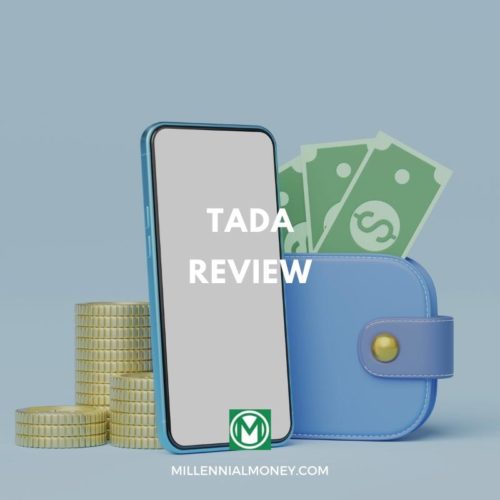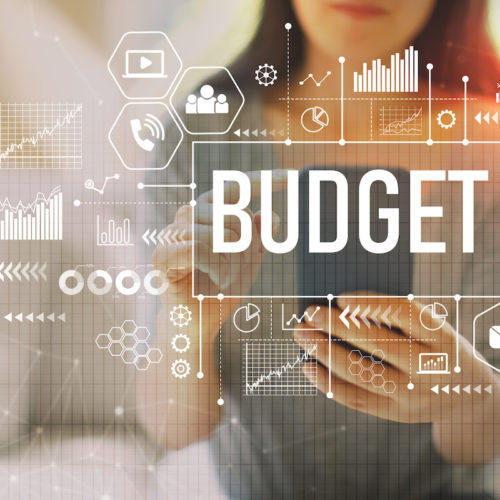Effective January 1st, 2024, Mint was shut down and integrated into Credit Karma. Mint users can still access several of the platform’s financial tools with a free Credit Karma account, but Mint is no longer be available.
It should be no surprise that Personal Capital and Mint top my list of personal finance management tools. Both of these sleek apps give users loads of flexibility and control over their financial lives.
If I got a penny every time someone asked me “Mint or Personal Capital?” — well, I probably would have achieved financial independence way before age 30!
Both these popular tools for money management can make your life easier by syncing your financial accounts in one location – and both are free to use, which is fantastic.
Personal Capital vs Mint: Overview
It’s so easy to lump Personal Capital and Mint together, but they are very different programs.
- Personal Capital helps users plan for future financial goals like retirement or saving for a house by offering investment management and investment tools.
- Mint tracks your expenses and income, helping keep you in control of your day-to-day spending habits so you can better meet your financial goals.
There’s some overlap. Both programs can help you gain control of your financial life. So if you’re deciding between these two free tools, I bet you’ll be more interested in their differences.
This post is for you. In this Personal Capital vs. Mint post, I’ll drill down to look at their distinctive features. Even though both programs can help you reach your financial goals, you’ll achieve more success by using the program whose strengths line up with your unique needs.
What is Personal Capital?
I’ve talked about Personal Capital before – perhaps more than once. In fact, if you have been reading this blog for a while, you’ll probably know I’m a massive fan of this tool. I use it to review my finances every day.
Founded in 2009, Personal Capital is similar to Mint because it is also a financial management tool – and PC is one of the most popular Mint alternatives. However, Personal Capital focuses on investment tracking.
Personal Capital offers a way to grow your finances — not just control them. By grow, I mean investing.
With the free version of Personal Capital, you can see your net worth, analyze your investments, and discover any hidden investment fees you weren’t aware of before.
And you can also set spending and saving goals. Personal Capital is essentially a hybrid of two services – a free wealth management tool and a paid financial robo-advisor. For this review, we’re going to focus on the free version of the personal finance app.
Continue Reading:
That said, both versions come with some impressive tracking and analysis tools, such as:
- Asset Allocation Tool
- 401(k) Fee Analyzer
- Retirement Planner
- Investment Checkup
What is Mint?
Mint.com is a free tool that helps you manage your finances all in one place. Mint can help you gain control of your expenses.
Mint incorporates your financial accounts – bank accounts, credit cards, investment accounts, and loans – so you can get a clearer picture of your financial situation without having to log into several different accounts.
Founded in 2006, Mint is free to use and accessible to everyone. There is no software to install – and you can easily access Mint with any web browser or mobile device.
Mint is part of Intuit, which also owns Turbo Tax, and once owned Quicken, the grandfather of digital budgeting tools.
Mint offers you an overview of your finances and provides several personal finance tools such as:
- Spending Analysis and Budgeting Tools
- Credit Report Monitoring
- Bill Pay Reminders and Tracking
Bonus: Credit monitoring with Mint is a completely free service, meaning you don’t need a credit card on file to keep an eye on your credit score. You can see your free credit report anytime.
Continue Reading:
Now let’s take a closer look at each of these apps and their functionalities.
I’m going to break it down and look at the most essential components to help you understand which personal finance app performs better in each of the categories.
Personal Capital vs Mint: Linking Financial Accounts
Seeing all your financial information in one place helps you make financial decisions within the context of your overall financial life.
So let’s start with ease of use for linking all your financial accounts in one place within the app. With both apps you can link these kinds of accounts:
- 401(k)
- Checking and savings accounts
- Credit card accounts
- Student loans
- Mortgage
- Auto loan(s)
- Investments
- IRAs & other retirement accounts
- Even property assets
With both apps, you can easily link up the most used financial institutions. You can find smaller banks, lenders, or credit unions by using the search function.
But linking all your accounts takes time when you consider all passwords and other security measures you’ll need to navigate.
If you happen to need a coffee break during the process, picking up where you left off is easier with Personal Capital.
🏆 Winner: Narrow victory for Personal Capital.
Personal Capital vs Mint: Synchronization
The process is pretty similar for both tools – but Personal Capital does have fewer reported issues from users.
Mint uses an in-house system to sync with financial institutions, while Personal Capital uses Yodlee to handle its syncing – a much more reliable and stable service.
You can sync up a similar number of institutions and financial services – but from experience, if you run into any issues, Personal Capital does appear to be quicker at sorting it out.
🏆 Winner: Personal Capital
Personal Capital vs Mint: Dashboards and User Experience
Both of these user-friendly tools display complex financial information in an easy-to-understand, straightforward dashboard.
What I like about Mint’s dashboard is that it’s customizable – you can choose the order in which the features show to best suit your needs.
That said, I think Personal Capital still offers a smoother user experience. The graphs and charts are easier to digest – and the whole experience is just less bumpy.
🏆 Winner: Personal Capital
Personal Capital vs Mint: Security
Complete security is a crucial element in using wealth management tools, since aggregating all your financial information in one place can seem risky.
Both Personal Capital and Mint use AES-256 bit encryption (same encryption used by the U.S. government), and they both offer two-factor authentication.
🏆 Winner: Tie
Personal Capital vs Mint: Budgeting Capabilities
With Mint, you can build a budget category by category, as well as track spending across subcategories within each group.
This is a nice feature for someone who wants to curb overspending and know exactly where every dollar is going.
Mint will also automatically notify you if you have an upcoming bill, allowing you even to link recurring online and offline bills.
Personal Capital’s budgeting tools are more cash flow based. This means you’ll focus more on your overall income instead of on every little expense.
That said, Personal Capital does allow you to set a budget by total dollar amount – and the program will report on your spending by category.
🏆 Winner: The clear winner here is Mint — which isn’t surprising since Mint was born as a budgeting app.
Personal Capital vs Mint: Investing
You can link your investment accounts with both Personal Capital and Mint, which is awesome. You can access your performance, allocation of your assets, and value easily on the app.
But the difference between the two is that Personal Capital allows you to interact with your investments. By that, I mean access to detailed breakdowns of your investments – as well as clear visual representation with actual numbers.
In other words, you can delve deep into your investments and understand how your money is growing. You can see what this growth means to your retirement plan, savings plan, or other financial goals.
And, if you’re not someone who likes to analyze investments and would rather do something else, Personal Capital does have an Investment Checkup tool, which does all of that for you.
The checkup will give you information about your target allocation, risk and return, assets, sectors you’ve invested in, the investment fees you’re paying – and more. It’s incredibly useful – and, again, free.
🏆 Winner: Personal Capital
Personal Capital vs Mint: Retirement Planning
I’ve always said planning for your retirement is crucial for any millennial – and that early retirement is really what you should be aiming for. I was able to retire at the age of 30 by using my retirement strategies.
I think the main app you use for wealth management should definitely include retirement planning.
That’s where I feel that Personal Capital completely outperforms Mint – because Mint doesn’t offer a retirement planning overview – nor other investment portfolio features.
Personal Capital’s super valuable Retirement Planning Feature lets you determine how much you need to be saving for retirement quickly and easily. This tool could even replace or supplement the services of a human financial planner (unless you need in-depth financial advice).
Within this one app, you can see all the information from your outside accounts. You can see contributions you’re making to your retirement accounts and even your planned age of retirement.
And you won’t have to pay a penny for these management services!
🏆 Winner: Personal Capital
Personal Capital vs Mint: Mobile Apps
Both tools come with sleek mobile apps, making it easy to manage your finances on the go. Both Mint and Personal Capital have apps available for Apple iOS and Google Android users.
🏆 Winner: Tie
Personal Capital vs Mint: Customer Service
Mint users have often complained about customer service (or lack thereof) within the app. Personal Capital has a better reputation which holds up in my experience.
Getting help is easy – I just hit the “Help” button in the button right corner of the page, and then “Contact us,” to get in touch with the Customer Service team.
If you email about anything financial, from my experience, you can expect to receive a reply from Personal Capital within less than 24 hours.
Some reviews online also mention that when problems with synchronization arise on Mint, getting help is more challenging. I’ve only had good experience with Personal Capital’s customer service.
Personal Capital offers customer service 24/7; Mint’s staff is available from 8 am to 6 pm Eastern time.
🏆 Winner: Personal Capital
And The Clear Winner Is… Personal Capital!
I think both of these tools are great – but, personally, Personal Capital is the one I value the most.
While Mint is in the lead for budgeting, Personal Capital is more comprehensive, and it offers excellent customer service.
This is so important when you allow an online platform to help you with your financial management and share with them your most sensitive financial data.
After all, you don’t want to be left hanging when you have questions about your money.
| Personal Capital | Mint.com | |
|---|---|---|
| Linking Financial Accounts | 🏆 | |
| Synchronization | 🏆 | |
| Dashboards | 🏆 | |
| Security | 🏆 | 🏆 |
| Budgeting Capabilities | 🏆 | |
| Investing | 🏆 | |
| Retirement Planning | 🏆 | |
| Mobile App | 🏆 | 🏆 |
| Customer Service | 🏆 |
Manage Your Finances with Personal Capital or Mint
As you know, I have been using Personal Capital for years to manage my finances.
Mint has fantastic features and is also very useful in financial management – but personally, I think its functionality still needs to improve.
You may well choose to use Mint instead of Personal Capital, especially if you want top-notch budgeting features so you can better control your spending.
But when you already have your spending in check and want to meet retirement goals or access solid investment services, you’ll want to use Personal Capital.
Naturally, this is entirely up to you. We could even say Mint and Personal Capital could both be used simultaneously because:
- Personal Capital excels with investment strategy while adding in limited budgeting capabilities.
- Mint excels with budgeting tools while adding in limited investment planning tools.
You could get the best of both worlds by managing your spending with Mint and managing your wealth with Personal Capital.
The best thing about them both is that they are entirely free.
Whatever you choose, the most important thing is that it works for you – and allows you to get your finances under control.
Why Are Personal Finance Apps Free?
I have used the word “free” about 15 times so far in this review because it really is amazing when you can get free tools that offer the level of service Mint and Personal Capital offer.
But we all know free is seldom actually free, so people ask me a lot: What’s the deal with these two services? How do they make money?
How Mint Makes Money
Mint makes money by showing you offers for credit cards, personal loans, credit monitoring services, and other financial tools. Mint would make even more money if you clicked on an ad and opened a new account.
The ads may get annoying as ads will do. But remember they are helping pay for the tool you’re using to manage your financial life, plan for upcoming bills, and analyze your spending habits.
Of course, you should never open a new credit card account or use any other financial service unless it meets an actual need. But if you do see an offer that could help improve your financial life feel free to click on it.
How Personal Capital Makes Money
The services I’ve discussed from Personal Capital in this post are free, but the platform also has a paid level that subsidizes its free services.
The paid plan includes a robo-advisor that invests for you based on your risk tolerance and asset allocation goals. This plan also lets you talk to human financial advisors.
If you decided to upgrade, you’d pay annual fees starting at 0.89% of your account balance each year on balances less than $1 million. As your balance grows, the annual percentage rate of your fee would decrease.
Compared to robo-advisors like Betterment and Wealthfront which charge fees ranging from 0.25% to 0.4%, Personal Capital’s fees may seem high.
But you get a lot more with Personal Capital, too.
Personal Finance Apps vs Human Financial Planners
Here’s another question I get asked a lot: Why would you need to work with a human financial advisor when you have access to free personal finance apps?
This is a good question, and the answer isn’t as simple as you may think.
Benefits of Human Financial Planning
Even in a world of robo-advisors that can grow your net worth based on decisions made by artificial intelligence, human financial advisors have a unique ability.
Financial planners can give you advice based on all facets of your financial life. They can also come up with creative solutions for unique problems. Algorithms can only apply existing solutions to common scenarios.
And, a conversation with a real person can help you understand your personal finance challenges and goals better than any blog post or online research.
Benefits of Free Personal Finance Apps
Personal finance apps help you manage the details of your financial life — things like cash flow, investment management, spending patterns, and net worth.
Not everybody needs an elaborate financial plan — at least not yet — because the first step in taking control of your financial life is this: spend as little as possible, earn as much as possible, and save and invest the difference between what you earn and what you spend.
That’s the first step, and you can start today by downloading a free personal finance app.
What’s the Verdict?
So in a nutshell: Human financial planners can help you identify and set goals while personal finance apps can help you stay on track to meeting your goals.
Which gets us back to why I like Personal Capital so much: It goes beyond simply managing your expenses and gives you a way to work toward larger financial goals.
And this is where financial freedom becomes more possible.





Read 2 comments or add your own
Read Comments